The 1990s was an era of bold experimentation within the automotive industry, with designers pushing the boundaries of creativity and innovation.
Streamlined silhouettes, futuristic interiors, and unconventional features became hallmarks of car design, making many vehicles look as if they’d driven straight off the set of a sci-fi blockbuster.
Concept cars inspired production vehicles, blurring the lines between imagination and reality.
From sleek, aerodynamic sports coupes to curiously shaped family cars equipped with cutting-edge technology, this decade offered plenty of futuristic charm.
Join us as we journey back through time, exploring 15 standout ’90s cars whose designs still captivate and amaze today.
The 1990s automotive scene often receives mixed reviews, particularly when it comes to American cars.
Criticisms typically revolved around questionable build quality, lackluster performance, and uninspired design choices.
Yet amidst these critiques, several exceptional vehicles emerged, defying expectations and showcasing genuine innovation, reliability, and enduring appeal.
From groundbreaking engineering feats to iconic styling that still turns heads today, the decade wasn’t entirely defined by disappointment.
Let’s explore 15 standout examples from the ’90s when American automakers rose to the occasion, proving they could craft truly remarkable cars.
I often get a kick out of special-order cars. It’s enjoyable to see a vehicle that’s outside the realm of its standard configuration. However, sometimes the term “special-order” is misused—often for good reason.
It’s a concept missing from most mainstream brands today but, in the past, it was possible to order a vehicle that strayed from regular-production configurations. Want a color that matches the ’65 Pontiac your father had? Pay extra (and, likely, a non-refundable deposit) and you could get your wish.
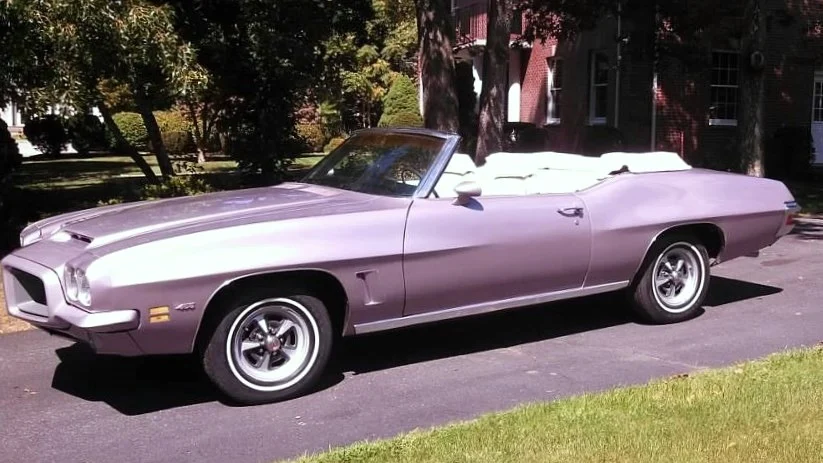
Or are you in the market for a Cadillac but wish for more contrast in the interior? That’s what the original owner of this 1960 Eldorado Seville did—(s)he specified a Heather leather interior with White inserts.
This was an easy job for Cadillac because it offered both Heather and White as available choices. In fact, Cadillac asked that seven parts of the interior combination be specified.
In the 1960 Cadillac Optional Specifications Manual, there is a section in handling special-orders. Cadillac has available an extra-charge trim program which permits the ordering of standard upholstery materials in special combinations of cloth, leather and coated fabrics. The factory does not wish to solicit this business. It is offered as an extra Cadillac service to accommodate owners who have individual desires in the accoutrement of their car’s interior.
An average of six weeks is required to produce a special trim order. This time factor applies to any deviation from standard, even though it may be a single item such as the headlining, carpets, top boot or bolster.
No matter how seemingly minor, whenever a deviation from a standard trim combination is necessary, the entire order must be removed from regular production and processed individually. This is due to the intricate patterns from which multiple sets of components are cut making it impossible to change or substitute just one part or section, such as the bolster or top boot on a Convertible, without handling the complete order on a special basis … The cost will usually be the same whether a single item is changed or if several variations are made.
Remember, this is Cadillac, which likely gave more leeway for customers to special-order vehicles than lesser brands. And this was 1960, which was a different environment than a decade later when Oldsmobile offered four special-order colors.
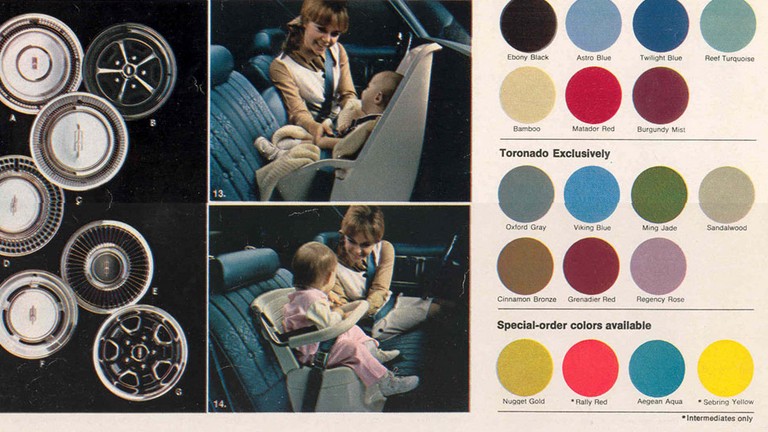
The 1970 Oldsmobile brochure shows a quartet of “special-order colors available”: Nugget Gold, Aegean Aqua, Rally Red, and Sebring Yellow, with the latter two restricted to intermediates. However, if the factory offered these colors, could they truly be considered special-order or are they simply extra-cost? The issue of semantics and marketing rear their head, and the debate has no easy answer. My opinion? Not special-order.
Another special-order reference I sometimes see relates to a car that was ordered by a customer instead of a dealership. “My dad special-ordered this car at Kirkwood Dodge. He specified the 440 engine, TorqueFlite, and Limelight paint,” one could say, but nothing about this suggests anything veered off the order form. I’ve come to terms that people sometimes consider a retail order a special-order, but it’s not.
Ford products have an advantage in distinguishing special-order cars. On the data plate, there generally is a two-digit DSO (District Sales Office) that reflects a region in which the car was ordered. Generally, they’re larger cities, but they’re based on a population spread, so Newark, New Jersey had its own DSO identity within the network despite its proximity to New York City.
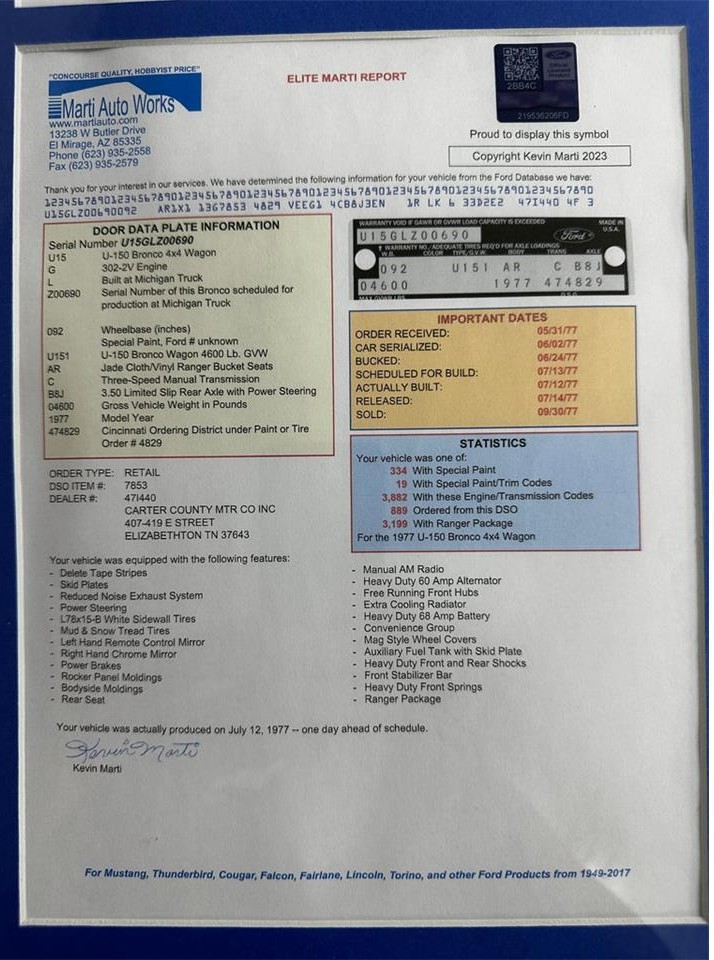
However, special-orders will consist of six digits instead of two. The first two are the usual DSO numbers, but the subsequent four are special-order numbers that correspond to either a Domestic Special Order (which includes such “regular” cars as the Boss 429, Shelbys, and Cougar GT-Es), Foreign Special Order, Paint & Tire Order, or Special Production Order. Six digits is your key in learning if your Ford Motor Company product is something different from the norm.
Can you think of other instances?
The world of performance cars is a realm where passion meets precision, and boundaries are made to be broken.
High-octane excellence isn’t just about raw power—it’s about the relentless pursuit of innovation,
unforgettable design, and the thrill that pulses through every curve and straightaway.
This curated journey spotlights fifteen automotive legends that didn’t just raise the bar;
they reshaped what drivers dreamed possible.
From record-shattering speedsters to technological trailblazers, these vehicles stand as monuments to engineering brilliance and automotive artistry.
Prepare to rediscover the icons that changed the way we experience the road.
If you live near St. Louis or anticipate passing through in the near future, then we’d recommend giving yourself time to visit the Saint Louis Art Museum for the exhibit Roaring: Art, Fashion, and the Automobile in France, 1918-1939.
Curated by noted automotive expert Ken Gross, Roaring “explores the transformative role of the automobile in pre–World War II France and highlights innovations across art and industry by those who embraced it as a provocative expression of the modern age. This expansive exhibition features paintings, photographs, sculpture, furniture, films, fashion, textiles, and 12 historic automobiles.”
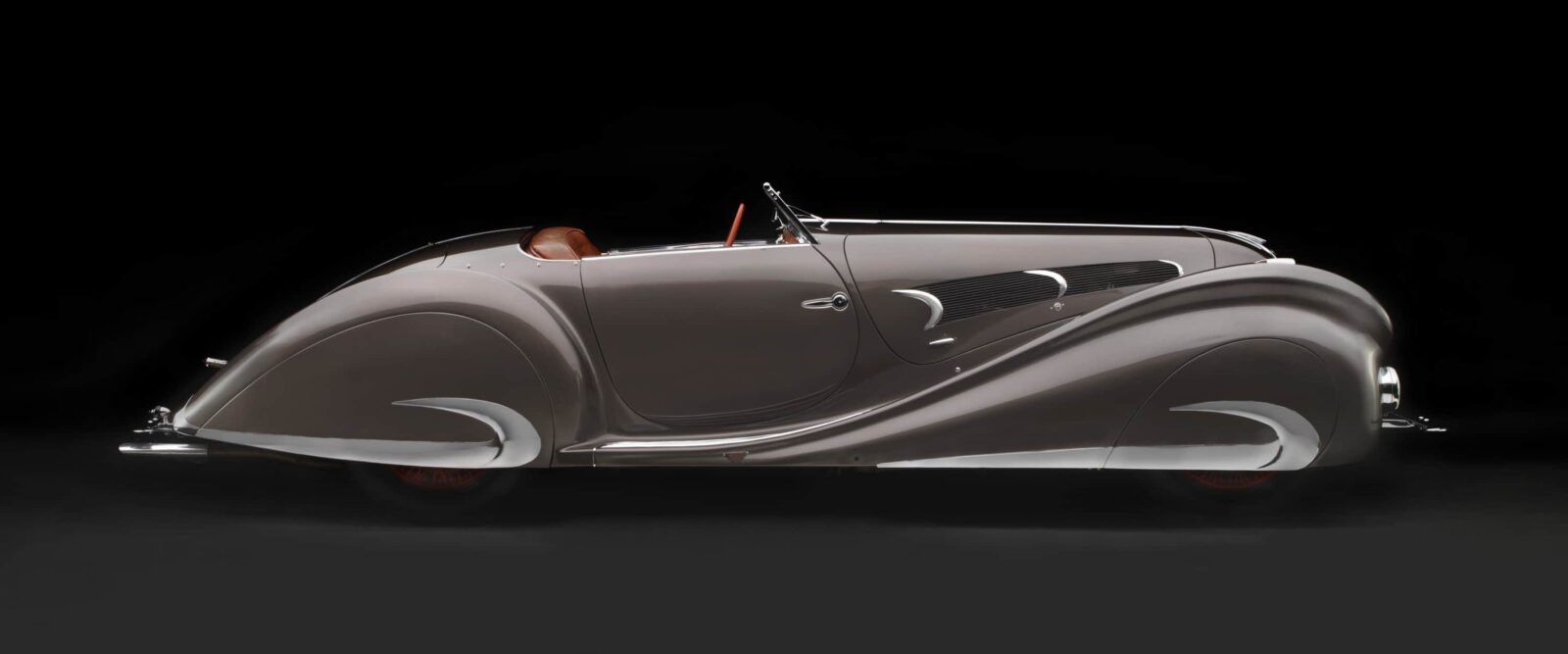
In case you didn’t know this, automotive designers are almost like fashion designers—they use their skills to make figure and form look better to admiring eyes. And as Paris had been the traditional hub for fashion at the time, the French took their automotive designs seriously. “As driving became more comfortable, motoring fashions evolved into stylish wardrobe staples. Magazines portrayed liberated women dressed in knit sportswear driving convertibles … With an open, interdisciplinary approach, Roaring illuminates the rich ecosystems that nourished this golden age of French automotive design.”
The exhibit is divided into six sections, with the 12 cars being among more than 160 works from notable institutions and private collections from Europe and North America. There even is an exhibition catalog (more like a book on the exhibit) with contributions from seven authors that tie it all together.

This exhibit will continue through July 27, 2025. If you cannot attend, the best Plan B is to listen to the audio tour where you can hear from experts about the transformative role of the automobile in France before the war. If are able to attend, then you may also be interested in the exhibit In Search of America: Photography and the Road Trip, which runs through October 19, 2025.
We usually (and rightfully) associate the 1960s-era Chevrolet Chevelles with high-performance two-door muscle cars, but the reality is, a good number – a majority, in fact – of the Chevelles sold during that decade were family-oriented sedans built for the masses. Station wagons, too, were popular during that time for their unmatched versatility.
But here’s the thing: Just because a car looks like a cargo-hauler doesn’t mean it can’t have a powerful drivetrain, a manual transmission, and a mean-sounding exhaust system. Best of both worlds? You’re looking at it.
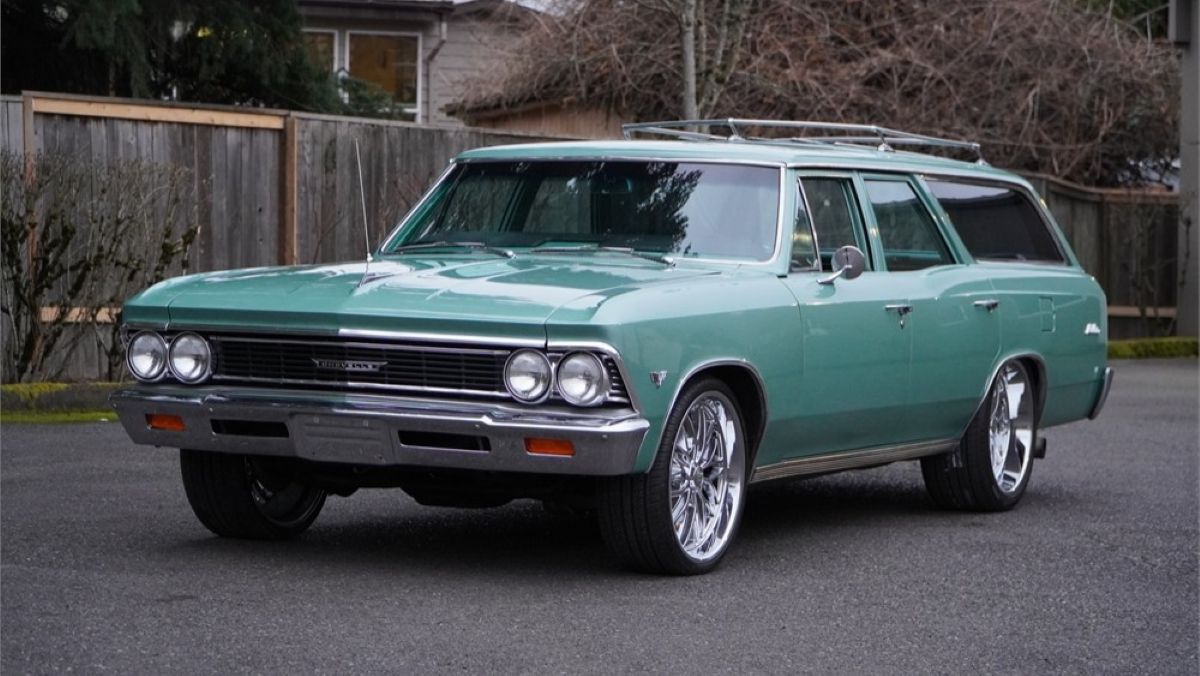
Featured on AutoHunter is this 1966 Chevrolet Chevelle Malibu Wagon. The car is being sold by a dealer in Oregon City, Oregon, and the auction will end Tuesday, June 10, 2025, at 12:00 p.m. PDT.
The car is ready for a cross-country road trip, complete with a luggage rack, newer tires and a replacement engine. According to its trim tag, the car was built in Fremont, California, in November 1966 and finished in Willow Green with a Medium Fawn and Light Fawn imitation leather interior. The interior, which has a two-row-bench layout, is now upholstered in black vinyl.
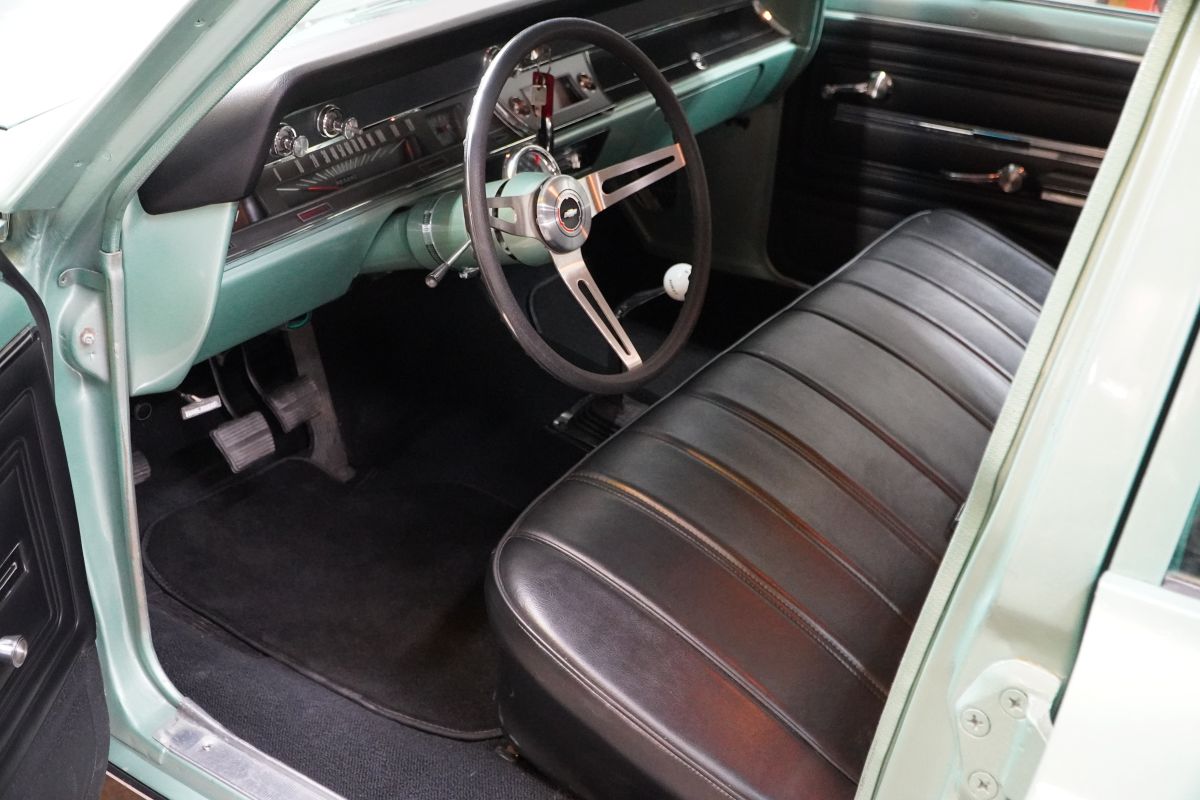
Chevrolet based the first-generation Chevelle on the General Motors A-body platform. It slotted in the hierarchy as a midsized vehicle and, in the Chevy lineup, it bridged the gap between the compact Chevy II and full-sized models. The Pontiac Tempest, Buick Special and Oldsmobile F-85 were all Chevelle-related models from a chassis engineering perspective.
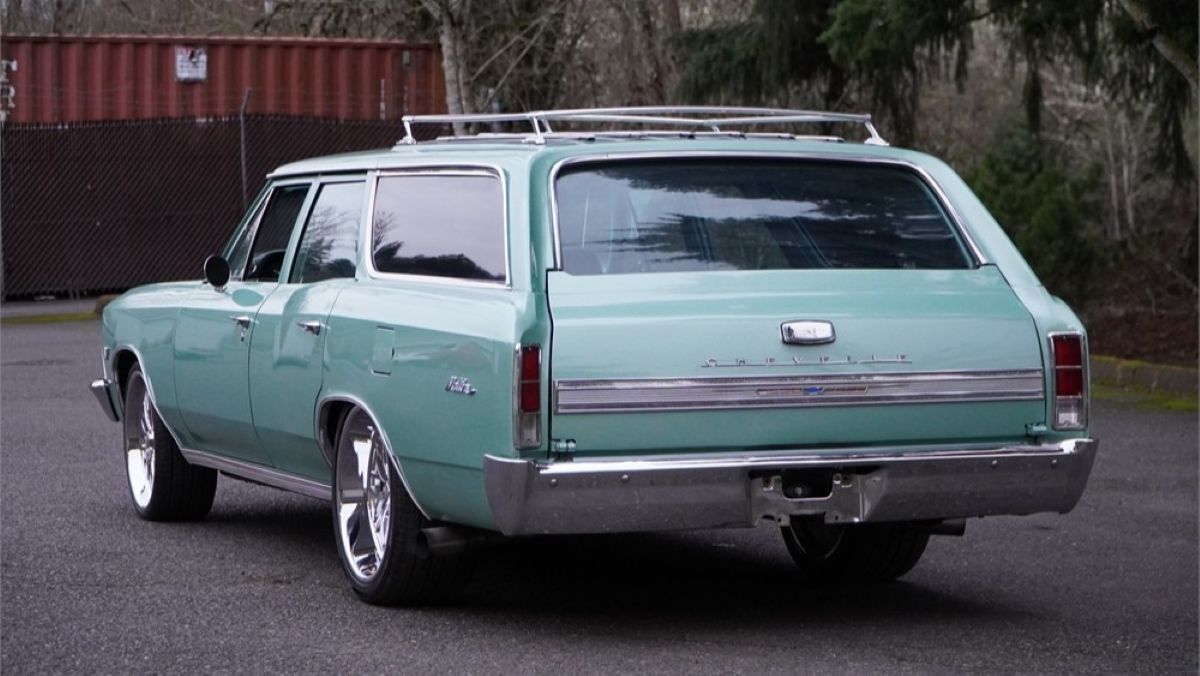
One magazine ad for the ’66 Chevelle station wagon said, “What did you buy a Chevelle Malibu wagon for?” It then listed out in two columns some of the reasons why men versus women liked the car. On one side, it talked about the long-load floor, full coil suspension and V8 for handling and power. On the other side, it mentioned the soft seats, handling and “Magic Mirror” finish. In other words, the Chevelle station wagon offered something for everyone.
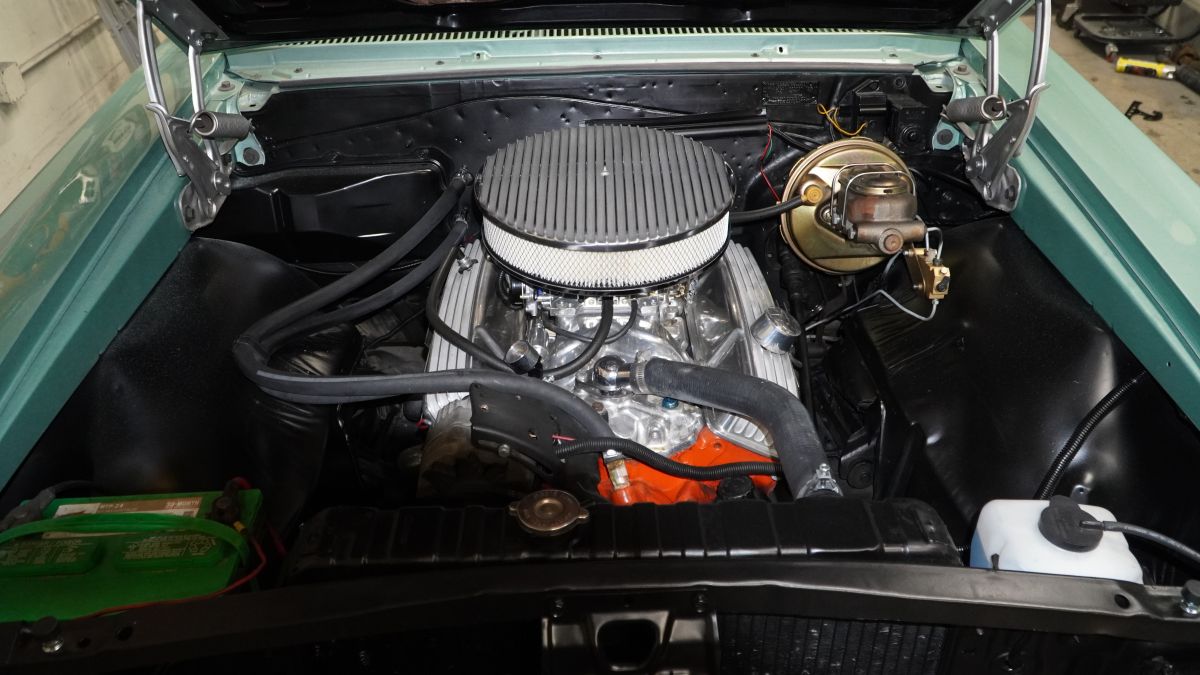
Power for this car, which the listing says was restored within the last five years, comes from a replacement 350ci small-block V8 that features a four-barrel carburetor, polished aluminum intake manifold, and a chrome air intake. A valved dual exhaust system with cutouts has been added so, despite its grocery-getter style, it has a muscle-car growl.
So load up your luggage and fill up the tank, because this is one “muscle wagon” that is ready to work – and play!
The auction for this 1966 Chevrolet Chevelle Wagon ends Tuesday, June 10, 2025, at 12:00 p.m. (PDT).
Visit the AutoHunter listing for more information and a photo gallery
France has long been a breeding ground for automotive creativity, producing sports cars that veer wildly from convention. From tiny twin-cylinder phantoms to radical canopy designs, these French machines often balance audacious style with unorthodox engineering choices. This article explores ten of the strangest French sports cars ever produced, each unfolding in roughly one hundred words.
Some embraced minimalism and extreme weight reduction, while others flaunted futuristic dashboards or mid-engine layouts in unexpected segments. Whether propelled by two cylinders or turbocharged V6s, these vehicles reveal how French designers and engineers repeatedly challenged norms. Prepare to discover the delightful oddities that make these ten true outliers.
1. DB
Founded by Charles Deutsch and René Bonnet in 1953, DB crafted lightweight sports cars built around diminutive Panhard flat-twin engines. Rather than chase big displacement, DB’s engineers used tubular steel frames and fiberglass bodies to keep weight under 600 kilograms, pairing slender two-cylinder powerplants to deliver nimble performance.
Models like the HBR boasted pontoon-styled fenders and aerodynamic nose cones rarely seen on small-displacement cars. Despite producing barely sixty horsepower, these machines could reach around 160 km/h, thanks to exceptional weight distribution and minimal mass. DB’s quirky embrace of economy-car engines in bespoke sports bodies exemplified French ingenuity, creating a unique driving experience defined by agility over brute force.
Long before “Rocket” became a marketing buzzword, Oldsmobile engineers pursued a delicate balance of innovation and brute force—combining refined engineering with raw V-8 torque to create some of the most memorable performance machines of their eras. In this article we explore ten of Oldsmobile’s most impressive performance cars. Each entry delves into basic specs and explains why these models earned a place in sports car history, showcasing Oldsmobile’s evolution from postwar disruptor to ’60s muscle icon and beyond.
1. Oldsmobile Rocket 88 (1949)
When General Motors introduced the 1949 Oldsmobile Rocket 88, it wasn’t just another new model—it was the world’s first muscle car in spirit. Underneath the streamlined body sat Oldsmobile’s groundbreaking 303-cid (5.0-L) V-8, producing a remarkable 135 horsepower—more than most contemporaries with much larger engines. Combined with a lightweight 2,880-lb chassis derived from the junior 76 platform, the Rocket 88 stormed to 60 mph in under 15 seconds—a startling figure for the era.
Its combination of overhead-valve technology, comparatively compact layout, and a smooth automatic transmission captivated buyers seeking high-speed comfort. The Rocket 88 established Oldsmobile’s “Rocket” identity, inspiring competitors to chase similar high-output V-8s and cementing its legacy as a pioneering American performance car.
Mazda’s saga in the sports car realm reads like an impassioned chronicle of engineering boldness, lightweight agility, and soulful design. From the groundbreaking Cosmo rotary to the global phenomenon of the Miata, Mazda has consistently demonstrated that driving pleasure transcends raw horsepower.
In the spirit of renowned automotive journalist Vukasin Herbez, this article explores ten of the most important sports cars in Mazda’s history. Each selection represents a pivotal moment when Mazda dared to innovate—reinventing package layouts, embracing rotary power, or redefining affordability in a way that reshaped both the brand’s DNA and the broader sports car landscape.
1. Mazda 110S Cosmo (1967-1972)
When the 110S Cosmo debuted in October 1967, it wasn’t merely a halo car—it was a declaration of Mazda’s ambition. Underneath its gracefully curving coupe body hid a two-rotor Wankel engine displacing just 982 cc yet delivering 110 horsepower. That power-to-weight ratio translated to a 0-60 mph sprint in roughly 10 seconds and a top speed past 120 mph—astonishing for a sub-1.0-liter engine in 1967.
Limited to around 1,176 units, the Cosmo proved rotary reliability in series production. By marrying exotic engine technology with a refined grand tourer ethos, the Cosmo launched Mazda’s long-standing romance with the rotary and set the stage for every RX that followed.
In an era when motorsports regulations demanded homologation specials, manufacturers unleashed engineering marvels that blurred the line between track dominance and street legality. These “crazy racing cars” were effectively detuned—or sometimes barely detuned—versions of purebred racers, fitted with headlights, mirrors, and just enough emissions controls to pass for a road car.
Here are ten of the most outrageous racing cars ever homologated for street use. Each represents a remarkable chapter in sports car history, where performance trumped practicality and a factory’s racing ambitions were writen in metal.
1. Lancia Delta S4 Stradale
In the mid-1980s, Group B rallying reached incandescent levels of power and danger—and nowhere was that more evident than in the Lancia Delta S4. Its Stradale (road) version, produced from late 1985, was effectively a slightly tamed rally monster. Underneath the unassuming five-door hatch exterior lurked a mid-mounted 1.8 L twincharged (supercharged and turbocharged) four-cylinder making around 250 hp in road trim—or significantly more in full rally spec.
With all-wheel drive, a Hewland gearbox, and a curb weight near 2,300 lb, the S4 Stradale could sprint to 60 mph in about 4.5 seconds. Despite its homologation requirement of 200 units, Lancia delivered only around 200 cars to customers, each a visceral reminder of the Group B lunacy. Today, the Delta S4 Stradale remains a fever dream: a car so wild on gravel that tamed slightly for tarmac, it still feels feral behind the wheel.
